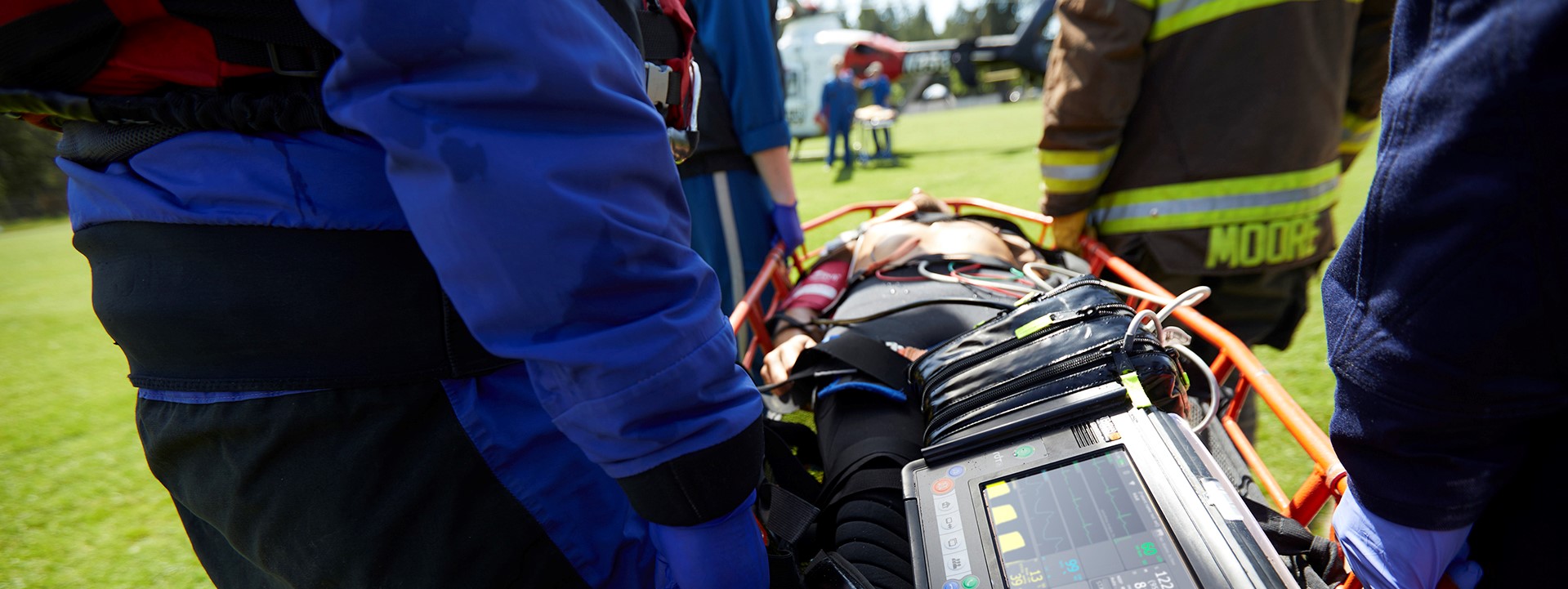How space helps seriously ill patients in air ambulances

Medical emergencies are set to be better managed thanks to air ambulances being equipped with space-enabled technology.
Air Ambulance Kent Surrey Sussex – which treats some 2,500 of the most seriously injured and ill patients each year in the south east of England – is to equip all its aircraft with devices developed in collaboration with ESA.
The equipment enables paramedics to live stream patient medical information – including electrocardiogram, body temperature, heart rhythm, pulse and respiration rate and blood pressure – via satellite or mobile phone network from the air ambulance to the hospital doctors who are due to take over their treatment.
The satellite link allows two‐way real-time consultations, which will help the air ambulance crew to take rapid clinical and transport decisions. It enables seamless electronic patient care reporting as the casualty leaves the care of the air ambulance crew and enters hospital.
The technology, developed by RDT – a small UK-based firm that was acquired by health technology company Philips in June 2018 – ensures a reliable connection between the helicopter and the hospital despite the low bandwidth by optimising data packets to prevent data loss during transmission. The transmission is secure, so medics can use it to send patient data.
The technology has previously been fitted to commercial aircraft to enable medical emergencies to be treated mid-air, potentially avoiding unnecessary flight diversions while bringing the best possible care to passengers.
Similar devices designed for health professionals have also been used by medics working in remote areas of the world to communicate with their hospital-based colleagues.
Richard Lyon, Associate Medical Director for Air Ambulance Kent Surrey Sussex, said: “In emergency situations where every second counts, having the ability to livestream a patient’s physiology data from an incident scene – whether en route, on the ground or in the air – offers a tremendous opportunity for our team to improve the outcomes for our patients.”
David Welch, Chief Executive of Air Ambulance Kent Surrey Sussex, said: “This will have a very significant impact in helping us to save lives and improve patient outcomes across the south east of England.
“We are confident the technology will be adopted by other air ambulances and partners in the health service.”
Arnaud Runge, a Medical Engineer at ESA who is in charge of the project, said: “We are very proud to demonstrate once again that space-enabled products and services can save lives – this is the best possible reward for our work.”


